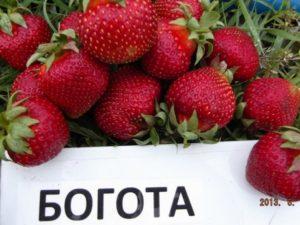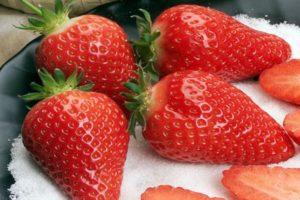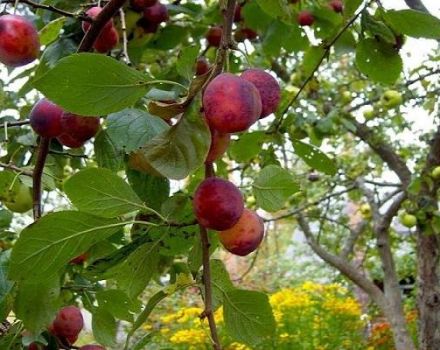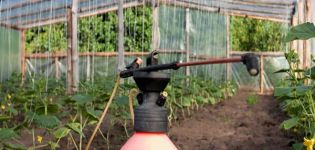Reasons why strawberries do not turn red and dry, what to do
People who grow strawberries are often faced with the fact that the berries dry out and do not have time to ripen. It is recommended to figure out in advance why strawberries do not turn red and dry, as well as familiarize yourself with ways to eliminate this problem.
Causes of drying strawberries and how to deal with them
There are several main reasons why strawberries can dry out.
Weather
Often problems when growing strawberries appear due to unfavorable weather conditions. The development of the planted berries can be impaired by:
- high temperature;
- droughts;
- night frosts;
- high levels of humidity and frequent rain.
All of the above factors negatively affect the growth and fruiting of the planted strawberry. However, the hottest summer without rain is most dangerous, because of which the soil quickly dries up. In drought conditions, the bushes do not have enough moisture, and they dry out quickly. To prevent this from happening, you will have to install a sprinkler irrigation system for the beds in the garden.
Lack of watering
Another common reason for which the edges of the leaves turn yellow and the fruits ripen slowly is insufficient moisture. Most often, this problem appears in the summer, when the temperature outside reaches 30-35 degrees. In such severe droughts, the plant dies due to a lack of moisture.
Therefore, when growing strawberries, you need to ensure that the soil is always moist.
Experienced gardeners advise watering strawberries every day. At the same time, 5-7 liters of water are consumed for each of the bushes.
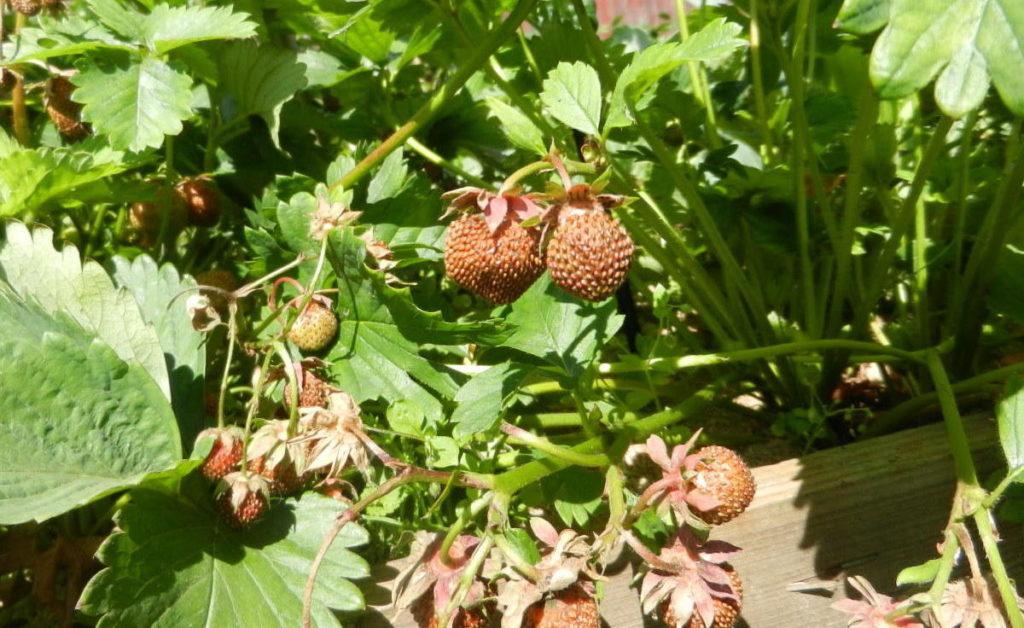
Fungal diseases
Strawberry bushes often dry out in the garden due to fungal diseases. There are several common diseases that you need to familiarize yourself with in more detail.
Gray rot
A dangerous disease that appears not only on strawberries, but also on other plants. The development of gray rot is evidenced by brown spots on the leaves, the size of which is gradually increasing. Over time, the spotting spreads to fruits that begin to rot. Rotten berries constantly suck out the juice from the plant, which leads to yellowing of the leaves.
It is impossible to cure this disease, and therefore all infected bushes must be immediately dug up and burned. If this is not done, the disease will spread to nearby healthy plants.

Powdery mildew
The most common fungal pathologies include powdery mildew, which affects young leaves of seedlings. If left untreated, the disease will begin to spread to berries, tendrils and bushes.First, a bloom of white appears on the leaves. Then the infected leaves will begin to dry out and curl up into a tube.
Powdery mildew appears in warm air and high humidity. That is why the disease affects the bushes grown in greenhouses. To get rid of the symptoms of powdery mildew, infected seedlings are treated with a solution of whey.
Verticillary wilting
This pathology is considered the most dangerous fungal disease that leads to wilting of strawberry bushes. Wilting symptoms do not appear immediately. First, the leaves in the lower part of the stem are affected. Brown spots appear on them, which over time completely cover the surface of the leaves. Gradually, the spotting spreads to the rest of the plant, after which it dries up.
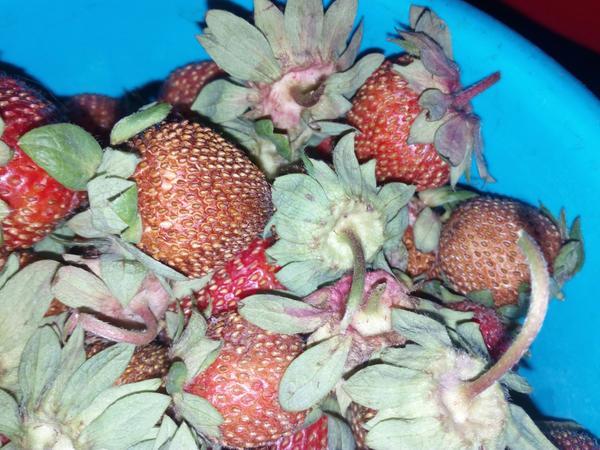
Even if the disease is detected at an early stage of development, it will not be possible to save the infected bushes. They will have to be dug up and burned so that the disease does not infect other strawberry seedlings.
Late blight
It is quite simple to notice late blight on the bush, since immediately after infection, brown specks appear on the surface of the leaves. Late blight is dangerous for strawberries, as it affects the fruits, which gradually rot.
You can get rid of late blight with the help of a solution made from copper sulfate.
Also, "Fitosporin" and Bordeaux mixture are considered effective remedies. Some gardeners recommend spraying seedlings with a solution of laundry soap or milk whey.
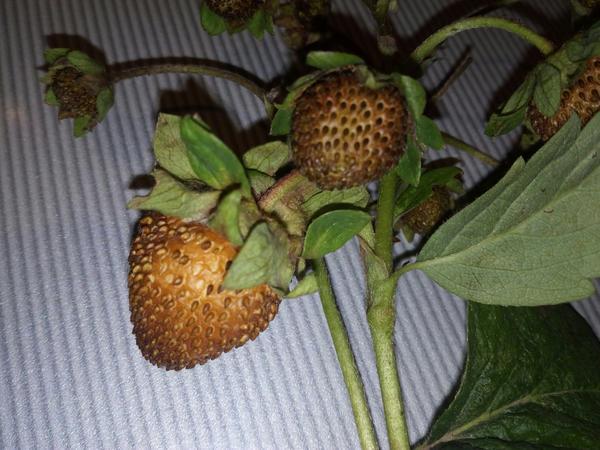
Pests
Not only diseases lead to drying of strawberries, but also some pests.
Nematode
A common pest that causes strawberries to wilt is a nematode. It is a thin and transparent worm that has an oblong and cylindrical shape. Getting on the leaves of plants, they begin to feed on sap, which leads to drying out of the bushes.
To clear the bushes of nematodes, it is necessary to spray them with a solution of copper sulfate. Also, the bushes are treated with garlic tincture. For its preparation, 250 grams of garlic is grated and mixed with a liter of warm water.
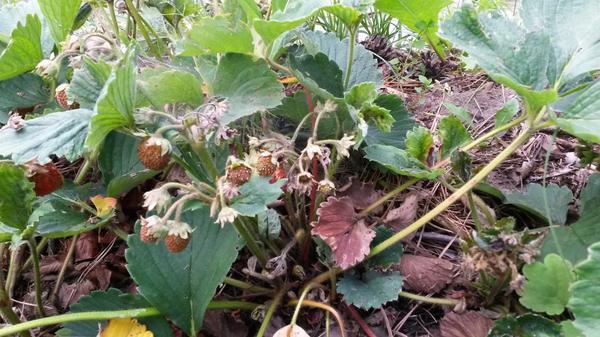
Strawberry mite
A small insect that is difficult to see with the naked eye. Most often, strawberry mites are noticed after the strawberry turns yellow. These pests, like nematodes, feed on plant sap. The following signs indicate the presence of strawberry mites:
- Delayed development of seedlings. The appearance of insects negatively affects the growth of bushes.
- Plaque. An oily coating with a yellowish tinge appears on the affected leaves.
The most effective remedy against ticks is considered "Karbofos". The bushes are sprayed with them at least twice a week.
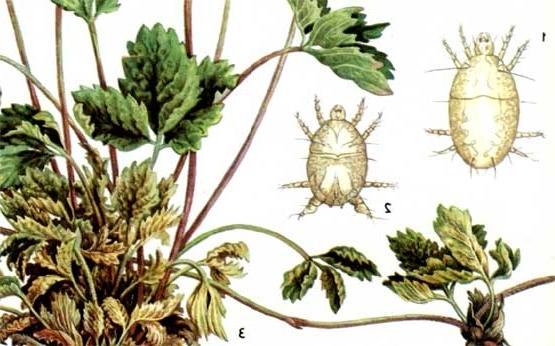
Strawberry raspberry weevil
Bushes attacked by a weevil quickly dry up and die. To get rid of this dangerous beetle, you need to use birch tar. You can also use a laundry soap solution. To prepare it, add two bars of soap to 3 liters of water.
What if the cause is not established?
Sometimes people cannot pinpoint the exact reason for the yellowing of the planted strawberries. In this case, you will have to transplant all the yellowed seedlings to a new place and observe them. If over time the yellowness disappeared, it means that the soil lacked nutrients.
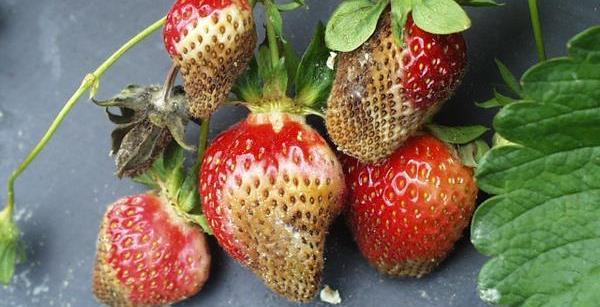
Preventive measures
To protect strawberry seedlings from pests and diseases, you will have to take the following preventive measures:
- Timely watering. It's no secret that a lack of moisture often ends in yellow foliage. Therefore, it is recommended to regularly moisten the soil so that it is not dry.
- Top dressing. In order for the seedlings to be sick less often and to be stronger, it is necessary to periodically apply top dressing. 2-3 times per season, the bushes are fed with superphosphate, humus and wood ash.
- Spraying with soda solution.This alkaline liquid prevents the appearance and development of fungal diseases.
Conclusion
Many gardeners face the problem of yellowing strawberries during cultivation. To get rid of this problem and prevent its occurrence, you need to familiarize yourself with the main reasons for the drying out of the bushes and the methods of their elimination.
